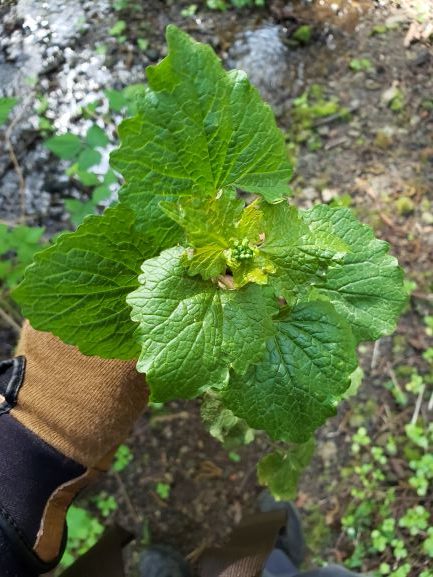Each year, Forest Park Conservancy staff work with our partners to help control the growth of invasive garlic mustard (aka Alliaria petiolate).
Garlic mustard is a threat to the wide variety of native plants in Forest Park’s habitat, so detecting and eradicating this plant is an important part of restoring an ecologically diverse and healthy ecosystem.
The Green Team Members have been looking up points on a map that have historically had garlic mustard to monitor, track and collect data, and help hand remove garlic mustard plants.
Currently, Green Team members are simply removing the garlic mustard, and are not replanting native species as there is a strong seedbank already present.
Luckily, the garlic mustard growth they are monitoring has not become a “monoculture”, which means the native plants have a fighting chance at reestablishing themselves in the area if the garlic mustard is adequately removed.
It is highly likely that the garlic mustard the Green Team Members are finding along the trails of Forest Park got there from one or two seeds on someone’s shoes.
Cue: the boot brush!
You can find a few boot brushes in Forest Park. One can be located in the Balch Creek Watershed along Lower Macleay Trail. Help save the native habitat and curb hitchhiking garlic mustard seeds by wiping your boots both before and after your hike. It is a very simple step that saves a lot of resources and makes a huge difference to the native habitat!
Read more about garlic mustard management from our partners at West Multnomah Soil & Water Conservation District.

